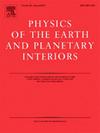Joint interpretation of potential field data using independent Lpq norm inversion and geological modeling: Application to Iron targeting in Central Iran
IF 1.9
3区 地球科学
Q2 GEOCHEMISTRY & GEOPHYSICS
引用次数: 0
Abstract
Solving applied geophysical inverse problems using the norm (mixed norm) is a well-established deterministic method, particularly in potential-field inversions. This approach minimizes the objective function by integrating norms () for the smallness and smoothness terms in the regularization function, offering high flexibility in controlling the sparsity and smoothness of the recovered models. This study focuses on the computational aspects and parameters of the model structure term that significantly influence the generation of density and susceptibility models. We investigate how different combinations of norms and scaling constants for the smallness and smoothness terms affect the recovery of various geometrical structures and the delineation of iron ore resources. The initial phase of our study involves testing these parameters using a synthetic model designed for gravity and magnetic susceptibility inversion, incorporating a complex dataset. Subsequently, we apply mixed norm inversion with different norm combinations to ground-based potential field data from an iron ore deposit in the Bafq metallogenic belt, central Iran. This region is characterized by a reverse fault that has induced a north-south trend in hematite-magnetite mineralization. A key focus of this study is the impact of employing identical versus non-identical norms in the smoothness term of the model structure. By adjusting the level of compactness to match the target trend, we generate a geologically more interpretable model. Following the inversion, we assess the effectiveness of various combinations of norm in delineating mineralized zones by comparing the inverted models to a lithological model obtained via co-kriging interpolation of borehole data. The results reveal significant hematite mineralization, with high-grade deposits predominantly located in the hanging wall of the fault and lower-grade deposits in the footwall. The magnetite mineralization, while less extensive, exhibits a spatial distribution similar to that of hematite, though it is typically shallower in comparison.

利用独立Lpq范数反演和地质建模联合解释势场数据:在伊朗中部铁矿找矿中的应用
利用Lpq范数(混合lp范数)求解应用地球物理反演问题是一种行之有效的确定性方法,特别是在位场反演中。该方法通过对正则化函数中的小度项和平滑项积分Lp范数(0≤p≤2),使目标函数最小化,在控制恢复模型的稀疏性和平滑性方面具有很高的灵活性。本研究着重于模型结构项的计算方面和参数,它们对密度和敏感性模型的生成有显著的影响。我们研究了小度和平滑度项的Lp规范和标度常数的不同组合如何影响各种几何结构的恢复和铁矿石资源的圈定。我们研究的初始阶段包括使用一个为重力和磁化率反演设计的综合模型来测试这些参数,并结合一个复杂的数据集。随后,我们将不同范数组合的混合Lp范数反演应用于伊朗中部Bafq成矿带某铁矿床的地基位场数据。该区具有逆断层的特征,该逆断层诱发了南北走向的赤铁矿-磁铁矿成矿作用。本研究的一个关键焦点是在模型结构的平滑项中使用相同和非相同规范的影响。通过调整致密程度以匹配目标趋势,我们生成了一个地质上更具可解释性的模型。在反演之后,我们通过将反演模型与通过井眼数据的共克里格插值获得的岩性模型进行比较,评估了各种Lp范数组合在圈定矿化带方面的有效性。结果表明,赤铁矿成矿作用明显,高品位矿床主要分布在断层上盘,低品位矿床主要分布在断层下盘。磁铁矿的矿化程度虽较浅,但空间分布与赤铁矿相似。
本文章由计算机程序翻译,如有差异,请以英文原文为准。
求助全文
约1分钟内获得全文
求助全文
来源期刊

Physics of the Earth and Planetary Interiors
地学天文-地球化学与地球物理
CiteScore
5.00
自引率
4.30%
发文量
78
审稿时长
18.5 weeks
期刊介绍:
Launched in 1968 to fill the need for an international journal in the field of planetary physics, geodesy and geophysics, Physics of the Earth and Planetary Interiors has now grown to become important reading matter for all geophysicists. It is the only journal to be entirely devoted to the physical and chemical processes of planetary interiors.
Original research papers, review articles, short communications and book reviews are all published on a regular basis; and from time to time special issues of the journal are devoted to the publication of the proceedings of symposia and congresses which the editors feel will be of particular interest to the reader.
 求助内容:
求助内容: 应助结果提醒方式:
应助结果提醒方式:


